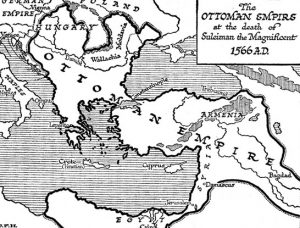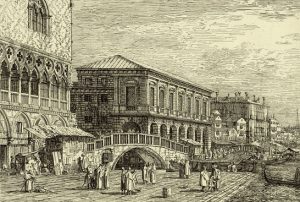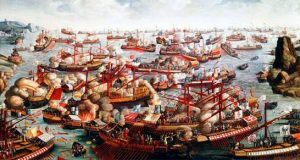Join us for conversations that inspire, recognize, and encourage innovation and best practices in the education profession.
Available on Apple Podcasts, Spotify, Google Podcasts, and more.

Istanbul sits between two continents, Europe and Asia.
© 2010 Map Resources, All rights reserved.
This map shows the extent of the Ottoman Empire during the the late sixteenth century, the period of My Name Is Red. Founded in 1299, the empire ultimately spanned parts of Western Asia, Eastern Europe, and North Africa and brought together many cultures and traditions, including those of the master illustrators from China, India, Persia, the Caucasus and elsewhere. In the novel, painting styles from Venice are challenging these traditions.

Alexander the Great of Macedonia creates one of the largest empires in ancient history.

Muhammad (c. 570-632) the founder of Islam, makes his sacred journey, known as The Hegira, to Mecca and Medina; the latter is pictured here in a 19th-century painting by the French Orientalist painter Alphonse Etienne Dinet.

Book of Kings or Shahnameh composed by the great poet Firdausi (here depicted in a monument in Tehran), is presented to the Sultan. The work becomes a source for many later works of Persian writers and miniaturists.

The Mongol ruler Genghis Khan establishes an empire reaching from China to Europe.

The Ottoman Empire was a dominant world military, cultural, and economic power for 700 years, reaching its apogee under the reign of Suleiman the Magnificent (1494-1566). His conquests established trade and communication with European centers, including Venice.

Tamerlane (Timur), and later rulers in his line, establish a Central Asian dynasty, fostering a rich artistic and cultural life. Herat (in modern-day Afghanistan) was a cultural capital of the Timurid Dynasty, and it is here that the master Bihzad established his workshop. This miniature from the Walters Art Gallery depicts Timur fighting the Knights of St. John, and is attributed to the 14th-century workshop of Bizhad.

Venice’s development as a center of painting―known both for innovation in style and supreme individual achievement―spanned three centuries, from the Bellini family in the 14th century to the works of Titian, Tintoretto, and Veronese in the 16th. Here pictured in an etching from the 1740s by Canaletto, Venice both fascinates and repels the artists in My Name Is Red, and has enthralled a long line of musical, artistic, and literary visitors.

The Ottoman Sultan Mehmet the II conquers Constantinople, establishing it as the center of the empire. He commissioned Gentile Bellini to create this portrait in the Italian style and had Italian frescos painted in his palace. Later rulers covered these frescos, and it is Sultan Murad III (1567-1603) whose interest in Italian art prompts the secret book in My Name Is Red.

The reign of Sultan Selim II brought treaties between the Ottoman Empire and Persia and Austria.

On October 7, 1571 Ottoman naval forces battled Christians at Lepanto (Náupaktos) on the Gulf of Corinth in Greece. The battle was undertaken to retake Cyprus, then under Venetian control, and was unsuccessful, with heavy cost to the Ottoman navy, marking an end to Ottoman control of the eastern Mediterranean. The victory at Lepanto proved potent in building military unity among Christian states; it is still evoked in some Catholic publications today, and is portrayed on a wall of the Vatican map library. The Christian victory at Lepanto inspired countless artists, including Yogesh Brahmbhatt of this sixteenth-century depiction, which shows the flags of the galleys and other identifying characteristics of the forces.
The action of the novel takes place in 1591, when Black returns to Constantinople after years away from home.
After seven centuries, including a long period of decline, the Ottoman Empire is dissolved in the aftermath of World War I and the Turkish War of Independence from European control. The last Sultan leaves Turkey, and the “Young Turks,” led by Mustafa Kemal Atatürk, establish the modern Turkish state. Atatürk promotes westernization in science and technology and in writing, replacing the traditional Persian/Arabic alphabet with a new script based on the Roman alphabet. Ottoman history, literature, and art are de-emphasized in public life.

Benim Adim Kirmizi, My Name Is Red, is published in Turkey. Orhan Pamuk evokes Ottoman and Persian history in the novel, which becomes a phenomenal best-seller in Turkey that is soon translated into many world languages.

Although the novel is set in 1591, Pamuk has said, “You write about the past to say something about the present.” This contemporary photo of an Istanbul street, could, with only a few changes, be a street that Esther hurried down to give a note to Shekure.